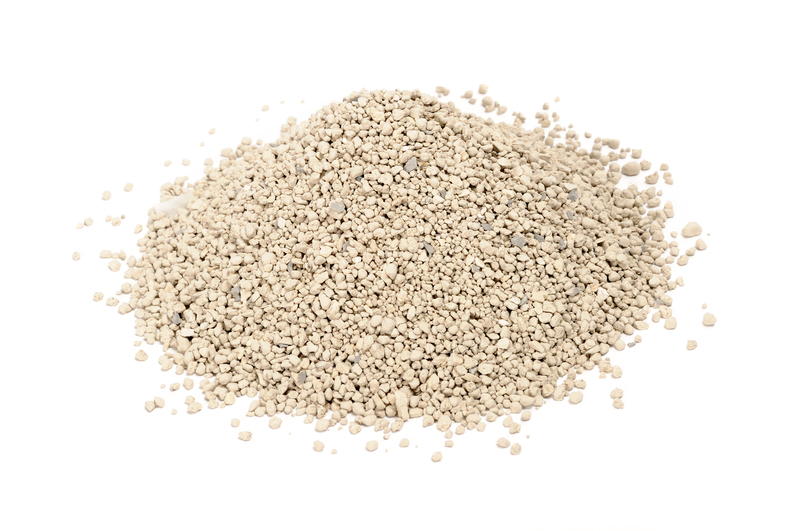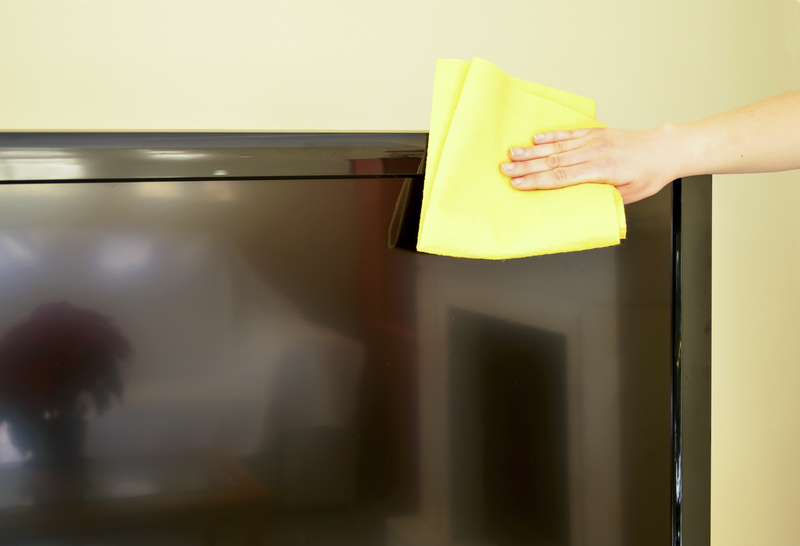Guide to Gleaming Glass: Streak-Free Solutions
Posted on 18/08/2025
Guide to Gleaming Glass: Streak-Free Solutions
There's something magical about spotless, gleaming glass. Crystal clear windows or glass doors let in radiant sunlight and create the perfect, uplifting atmosphere in any space. Yet, achieving that elusive streak-free shine often feels impossible, with persistent streaks, smudges, and dust ruining your hard work. Whether you're cleaning windows, mirrors, or glass surfaces in your home or car, this comprehensive guide unveils expert techniques, the best products, and practical tips to help you achieve dazzling results every time.
Why Clean Glass Gets Streaky: The Science Explained
Before diving into solutions, it's crucial to understand why glass surfaces often end up streaky after cleaning. Streaks are typically caused by:
- Residues from cleaning products that are not fully wiped away
- Hard water minerals left behind after rinsing
- Lint or debris from towels or cloths
- Improper drying methods, such as using a dirty cloth or letting glass air dry
- Environmental factors like sun exposure causing cleaner to dry too quickly
Armed with this knowledge, you can adopt techniques and cleaners that tackle the root causes of streaks, rather than just masking the symptoms.

Essential Tools & Supplies for Streak-Free Glass Cleaning
To achieve a flawless, streak-free glass finish, the right tools matter as much as proper technique. Gather these essentials before starting:
- Microfiber cloths--soft, lint-free, reusable, and highly absorbent
- Squeegee (for windows and large glass surfaces)
- Spray bottles for homemade or commercial solutions
- Distilled water (especially in hard water areas)
- An old toothbrush or soft-bristle brush for corners and crevices
- Rubbing alcohol, vinegar, or a high-quality glass cleaner
Tip: Avoid paper towels as they often leave lint and can cause streaking!
Choosing the Best Glass Cleaner
The debate rages on: Store-bought vs. homemade glass cleaners. Here's what you need to know:
- Commercial glass cleaners (like Windex): Efficient, convenient, and often formulated to minimize streaks. Look for ammonia-free options for tinted or coated glass.
- Homemade solutions: Eco-friendly and cost-effective. A proven recipe mixes one part white vinegar to one part distilled water. Add a few drops of dish soap for heavy grime.
- Alcohol-based cleaners: Excellent for quick evaporation and avoiding streaks, particularly on mirrors.
Variation tip: Try different combinations to find what works best for your environment and glass type.
Step-by-Step Guide to Streak-Free Glass: The Ultimate Method
Follow these proven steps to achieve gleaming glass every time:
-
Dust and Remove Surface Debris
Before you spray any cleaner, use a dry microfiber cloth or soft brush to remove dust, pollen, or cobwebs. This prevents scratching and ensures a cleaner result. -
Apply Your Cleaner
Spray your chosen glass cleaner or homemade solution evenly across the glass surface. Avoid oversaturating. -
Wipe Using the "Z" Method
With a clean, dry microfiber cloth, wipe in a consistent zig-zag ("Z") motion from top to bottom. This pattern helps minimize streaks and ensures even coverage. -
Squeegee for Perfection
For large windows or shower glass, a squeegee delivers the best streak-free finish. Start at the top corner and pull the squeegee down in straight, overlapping lines. Wipe the blade after each pass with a cloth. -
Buff and Inspect
Use a dry edge of the microfiber towel to buff any remaining spots or streaks. View the glass from multiple angles to spot missed areas.
Insider secret: Clean glass on a cool, cloudy day or when the sun isn't directly shining. This gives you more working time and prevents the cleaner from drying too quickly, which can cause streaks.
Expert Techniques for Specific Glass Surfaces
Cleaning Interior Windows and Mirrors
Interior glass poses different challenges due to fingerprints, smudges, and product residues.
- Mirrors: Use an alcohol-based spray for quick drying and streak-free sparkle. Spray onto a microfiber cloth (not directly on the mirror) to avoid drips.
- Windows: For kitchen windows, a drop of dish soap cuts through grease and cooking residue. Always clean frames and sills first to prevent dirt transfer.
Cleaning Exterior Windows
- Remove debris with a soft brush or vacuum, especially in corners.
- Rinse with water (preferably distilled) before applying your cleaner to loosen stuck-on grime.
- Use a squeegee in vertical strokes; this is especially effective on larger, outdoor windows.
- Finish by wiping edges with a dry microfiber cloth to catch any drips.
Streak-Free Solutions for Auto Glass
Car windshields, interiors, and windows demand special attention for safe, streak-free clarity.
- Avoid ammonia-based cleaners--these can damage window tint and cause fogging.
- Always use two cloths: one for initial cleaning, one for buffing out streaks.
- Roll down windows slightly to clean the top edge hidden in the frame.
- For sticky spots (from decals, bugs, etc.), use a dab of rubbing alcohol with a cloth, followed by your usual cleaner.
Preventing Streaks: Pro Tips & Common Pitfalls
Maintaining gleaming, streak-free glass is easier when you avoid these frequent mistakes:
- Using dirty or fabric softener-coated rags: These deposit residues, causing haze and dullness.
- Spraying too much cleaner: Excess liquid pools at edges, leading to streaks and drip marks.
- Not changing cleaning direction: Wipe the inside of glass horizontally and the outside vertically (or vice versa)--this lets you instantly spot which side needs attention if streaks persist.
- Ignoring edges and corners: Streaks and grime often accumulate in these spots. Use a clean cotton swab or toothbrush for a spotless result.
- Overlooking environmental factors: Humid conditions, pollen, and wind can resettle dirt before you finish cleaning. Plan accordingly!
Maintaining Shine: How Often Should You Clean Glass?
Regular cleaning prevents buildup, keeps glass surfaces at their gleaming best, and reduces effort over time. Here are frequency guidelines:
- Interior mirrors and glass: Weekly cleaning prevents fingerprints and dust accumulation.
- Exterior windows: Clean seasonally (every 3-4 months), more often during pollen or rain-heavy seasons.
- Car windows: Monthly cleaning boosts safety and visibility.
Pro tip: Quick spot cleaning in between regular sessions saves time and keeps surfaces sparkling!
Natural Streak-Free Glass Cleaning Recipes
For those seeking eco-friendly glass cleaning solutions, homemade recipes can deliver dazzling, streak-fee results. Here are tried-and-true favorites:
1. Vinegar & Water Solution
- Mix equal parts distilled white vinegar and distilled water in a spray bottle
- Optional: Add a few drops of lemon essential oil for a fresh scent
2. Alcohol-Powered Glass Cleaner
- 1 cup rubbing alcohol
- 1 cup distilled water
- 1 tablespoon white vinegar
- Mix in a spray bottle for a fast-evaporating, streak-free finish
3. Cornstarch Glass Solution
- 2 cups water
- 1/2 cup white vinegar
- 1 tablespoon cornstarch
- Shake well before every use (as cornstarch settles), spray, and polish for extra-glossy glass
These natural cleansers are safe, non-toxic, and perfect for homes with kids and pets.
Innovative Products for Streak-Less Glass Cleaning
The cleaning industry continually advances with products designed for the most stubborn glass streaks and smudges:
- Pre-moistened glass wipes: Convenient for quick touch-ups, car interiors, and electronics.
- Nanotechnology coatings: These leave an invisible film on glass, repelling water and dirt to keep your windows cleaner for longer.
- Magnetic window cleaners: Ideal for hard-to-reach exterior windows, these clean both sides of the glass simultaneously.
- Steam cleaners: Harnessing only water vapor, these lift dirt and sanitize glass without any chemicals, perfect for allergy sufferers.
Variation insight: Always patch test new products on a small area of your glass to ensure compatibility and streak-free results.

Frequently Asked Questions About Streak-Free Glass
What's the easiest way to avoid streaks on bathroom mirrors?
Avoid using products containing oil or cream (like commercial multipurpose cleaners). Use an alcohol-based spray with microfiber, and wipe dry immediately. Consider running a fan during hot showers to reduce condensation buildup.
Why does my glass haze after cleaning?
Haze is often due to product residue or using hard water. Try buffing with a fresh, dry microfiber cloth and switching to distilled water in your cleaning solution.
How do I remove tough stains from glass?
For hard water marks or limescale, apply a paste of baking soda and vinegar, let sit for 10 minutes, then scrub gently and rinse. For paint or sticker residue, use a razor blade at a sharp angle (carefully!) or specialized adhesive remover.
Can I clean tinted windows with vinegar?
Check the manufacturer's guidelines--while mild vinegar and water is safe for most, **avoid ammonia-based cleaners** on tinted glass as they can degrade the tint film over time.
Conclusion: Welcome Your Reflection With Confidence
Attaining flawless, sparkling glass doesn't have to be a struggle. Armed with the right tools, cleaning methods, and streak-free solutions, your windows, mirrors, and glass surfaces will gleam with pride. Whether you choose natural remedies or high-tech innovations, consistency, the proper technique, and a keen eye for detail are the secrets to streak-free, shining glass every time.
Remember--your glass is more than just a see-through surface. It's a reflection of your home's care, cleanliness, and the clarity you cherish every day. Happy cleaning!




